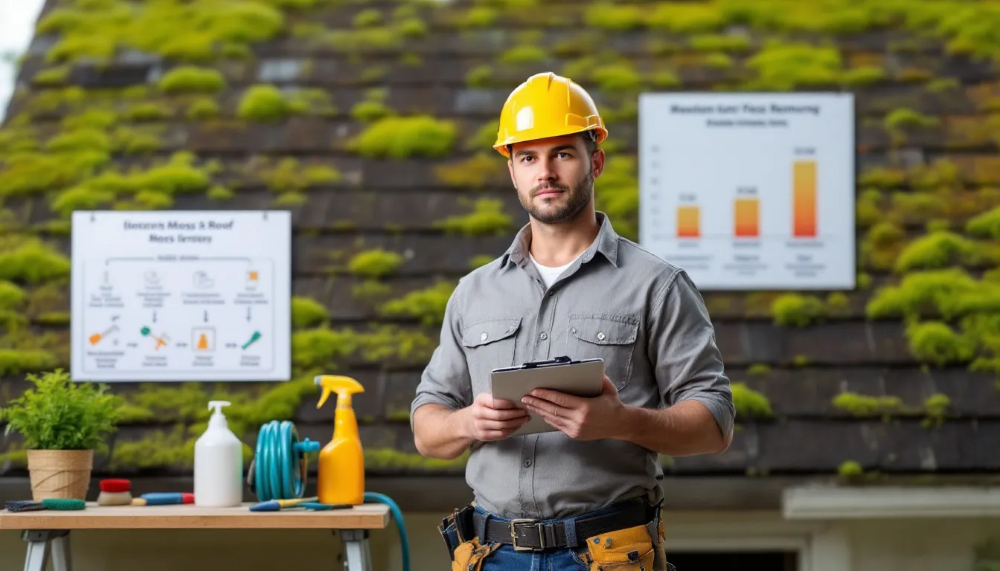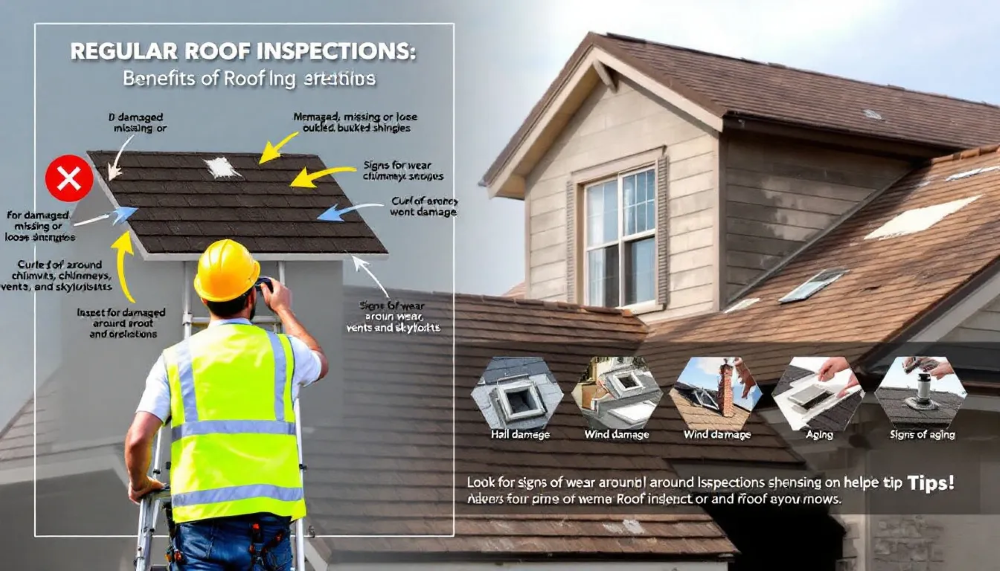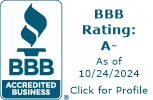Top Tips for How to Get Moss Off the Roof in New Jersey
Moss on your roof in New Jersey is more than just an eyesore—it can cause significant damage. Scheduling regular roof inspections is essential to catch moss growth early. Learning how to get moss off the roof in New Jersey is essential to maintaining your home. A roof inspector can assess the roof’s condition and provide maintenance recommendations. This guide will cover practical removal techniques and prevention tips.
Key Takeaways
- Moss thrives in New Jersey’s damp climate and can cause serious damage to roofs if not addressed early.
- Regular inspections of your roof are crucial to catch moss or algae growth early to prevent extensive damage.
- Hiring professionals for moss removal is recommended to ensure safety and avoid potential damage, as DIY efforts can often lead to more issues.
- Hiring professionals for moss removal can also include replacement services if the roof is significantly damaged.
Understanding Moss Growth on Your Roof

Moss has a tendency to flourish in environments that are moist, cool, and not directly exposed to sunlight, particularly where debris accumulates. Given New Jersey’s yearly average precipitation of around 47 inches, the conditions are ideal for moss proliferation. The roof’s surface, especially in shaded areas, can create an ideal habitat for moss. Consequently, your home’s roof faces an ongoing threat from moss infestation which needs to be dealt with swiftly before it escalates into a more severe problem.
The presence of moss on asphalt shingles isn’t just aesthetically disturbing. It poses tangible harm as well. By holding onto moisture after rainfalls or dew accumulation—moisture can linger under the shady cover provided by the growth—the longevity of your roof is compromised due to enhanced wear and tear including frost damage susceptibility. Moss typically thrives on north-facing sections of the roof due to the cooler, moisture-retaining environment. As time passes without intervention, this persistent dampness may erode the structural soundness of your rooftop significantly.
Moss dissemination exacerbates its harmful impact on roofs—it propagates through spores carried by wind currents that find their way effortlessly between individual shingles. Rapid colonization follows once these spores establish themselves within those crevices making immediate attention crucial at initial detection stages of any burgeoning green patches atop one’s sheltering structure.
Assessing the Extent of Moss Growth
Identifying early signs of moss and algae growth on your roof is key to preventing more significant issues in the future. The appearance of dark lines or discoloration on shingles, particularly black stains, can signal the onset of these elements. Conducting regular roofing inspections enables you to detect these indicators promptly and take corrective measures before they escalate.
Moss often forms dense patches that quickly expand while retaining moisture, which ultimately leads to deterioration of roofing materials. Consequently, it’s crucial to tackle moss proliferation immediately because this retained moisture infiltrates into the shingles causing them damage.
A thorough inspection by professionals involves a detailed examination of structural supports and stability among other roofing components for any evidence of damage or presence related to moss growth. A roofing inspector will also look for damages such as lost shingles or staining induced by moss accumulation, advising replacement with a new roof if deemed necessary. It’s vital not only from an integrity standpoint, but also for evaluating overall condition during both separate roof inspections and comprehensive home inspections. Periodic assessments are recommended including meticulous checks for potential cracks.
Additionally, a home inspector plays a crucial role in providing a broader assessment of the roof’s condition during real estate transactions, ensuring that potential buyers are aware of any underlying issues.
The initial phase in conducting a roof inspection typically entails scrutinizing the support system underneath the deck to ensure all around foundational sturdiness is present. Understanding how far-reaching the problem like moss has become allows homeowners appropriate action against its removal Safeguarding against possible impairments.
Tools and Supplies Professionals Need for Moss Removal
Professionals in the roofing industry arrive fully prepared with an assortment of equipment and materials for removing moss. Essential items typically include a spray bottle filled with chlorine bleach, as well as a ladder and garden hose to facilitate the process while safeguarding your roof from harm.
It is crucial to have essential roofing components like roof flashing and drip edge properly installed to prevent leaks and ensure compliance with building codes.
Upholding safety is critical when eliminating moss. Roofers are outfitted with various protective gear such as safety ropes, rubber gloves, shoes that resist slipping, eye protection, and garments meant for rough use to secure their wellbeing during work. They might utilize a harness or anchors for enhanced stability to minimize risks of accidents.
While conducting moss removal yourself may seem like an option worth considering, it’s usually not recommended because amateur efforts can lead to damage or impact warranty terms and insurance coverage negatively. Relying on professionals guarantees that the task will be executed properly without compromising your roof’s condition.
Safe Moss Removal Techniques

It is crucial to employ meticulous methods when eliminating moss from your roof to prevent harm. If left unattended, the growth of moss and algae on roofs can hold onto additional moisture, causing the roofing materials to degrade over time.
A roofing expert advises that specialists tend to opt for manual tools rather than power washing in order to safeguard the materials of the roof and avert any potential damage. It is important to avoid using a pressure washer when cleaning roofs, as the high-powered jets can damage shingles. For preserving the condition of your roof, soft wash roof cleaning is typically suggested by professionals.
How You Can Expect Professionals to Prepare Your Roof
Prior to commencing with moss removal, experts undertake numerous preparatory steps for your roof installation. Ensuring the area is safe mitigates the risk of mishaps, and observable indications of moss necessitate an immediate inspection followed by prompt measures. It is crucial to inspect the roof’s condition before starting the moss removal process to identify any potential issues. The safety protocols entail wearing a harness and eye protection, as well as making certain that ladders overshoot the edge of the roof by at least three feet to provide adequate stability.
It’s critical for those working on the roof to wear shoes that offer strong grip in order to prevent falls. During the thorough process of removing moss from roofs, professionals utilize tarps or plastic coverings not only to collect dislodged pieces of moss but also to safeguard surrounding plants and landscapes below. These preventative actions contribute significantly towards guaranteeing both a secure execution and an efficient outcome in eradicating moss from roofs.
Applying Cleaning Solutions
The subsequent stage involves the utilization of cleaning agents, where experts apply either commercial moss removers or a concoction of vinegar and water prepared at home. This phase commences with the distribution of the cleaning agent over the existing moss to exterminate it, allowing a minimum dwell time of 15 minutes.
Preventing mold growth is crucial, and this can be achieved by eliminating damp areas and using appropriate cleaning solutions.
To safeguard nearby vegetation throughout this operation, draping them with protective tarps is recommended. Utilization of rubber gloves and plastic sheeting serves as additional protection for flora and other surfaces. To eliminate both moss and cleansing substances post-treatment, employ a garden hose equipped with a spray attachment, ensuring that you opt for a gentle pressure setting to prevent any harm to your roof.
Preventing Future Moss Growth

It’s just as critical to prevent the formation of moss on your roof as it is to eliminate it. A proactive strategy involves cutting back any surrounding trees to increase direct sunlight on the roof, thereby discouraging the development of moss. By doing so and eliminating areas of shade, you significantly diminish the likelihood that moss will take hold on your roofing materials. Maintaining the roof’s integrity is crucial to prevent water damage and other structural issues.
The installation of copper or zinc strips along your roof can also serve as a deterrent against future growths of moss. To optimize their effectiveness in preventing moss proliferation, these metal elements should be affixed right beneath the peak ridge running across both sides of the roof. Preventing water damage by ensuring proper drainage and eliminating excess moisture is essential.
Ensuring that gutters remain unobstructed is vital for staving off excess moisture conducive to both mold and moss accumulation. Prioritize having a clean gutter system and a clear rooftop from existing clumps before introducing anti-moss metal strips while maintaining trimmed foliage around your home for ongoing prevention efforts.
When to Call a Professional Roofing Contractor
Employing a professional roofing contractor when necessary can prevent extensive damage and costs. If your roof exhibits clear signs of moss growth, shingle deterioration, or water intrusion, it is prudent to engage the expertise of a roofing specialist for these complications. Ignoring moss on your roof may cause serious issues. The vegetation can weaken shingles over time, leading to leaks that compromise the overall stability of your roofing structure. It is essential to hire a roofing professional to assess the roof’s condition and provide necessary repairs or replacements.
Before attempting DIY moss removal from their roofs, homeowners should take into consideration both its age and how much moss has accumulated. Involving experienced contractors in this process typically results in greater savings over time by addressing potential hidden damages and ensuring safety measures are upheld during cleaning operations. Such professionals offer reliable evaluations for any required repairs or replacements following thorough inspections of the condition at hand. If the roof is significantly damaged by moss growth, a roof replacement may be necessary.
Cost of Moss Removal in New Jersey

The cost of moss removal can vary depending on several factors. DIY materials, such as zinc strips, can range between $25 to $50 for a 50-foot roll. However, professional moss removal services generally cost between $300 to $750, depending on the size of the roof. It is important to obtain estimates from multiple roofing companies to understand the potential costs involved.
Algae-resistant shingles typically cost 10-20% more than regular asphalt shingles. The average pricing for roof cleaning falls between $0.20 and $0.35 per square foot, with the typical expense for cleaning a 2,000 square foot roof averaging around $440. Investing in professional moss removal can lead to long-term savings by preventing more significant damage and costly repairs.
Understanding these costs can help New Jersey homeowners make informed decisions about moss removal and provide an estimate.
Benefits of Regular Roof Inspections

It is crucial for homeowners to carry out regular roof inspections to ensure the durability and proper condition of their roofs. By performing these inspections annually, the need for expensive full-scale roof replacements can be postponed significantly, as frequent checks help in detecting issues early on. Assessing the roof’s condition through regular inspections can identify potential issues early, aiding in budgeting for future repairs and understanding the overall state of the roofing. The cost involved with routine maintenance through these inspections often pales in comparison to the cost involved with addressing larger repair needs that could arise if a roof is left unchecked.
Maintaining a record of consistent roofing inspections can simplify the process when filing insurance claims related to any damage sustained by the roof. These evaluations are key in spotting initial indications of deterioration such as mold or moss presence, water marks on interior ceilings or walls, and accumulation of shingle granules within gutters. Roofing professionals can provide thorough inspections and maintenance recommendations, ensuring that homeowners keep their roofs well-maintained and circumvent unforeseen financial burdens stemming from sudden roofing failures.
Summary
In summary, it is imperative to comprehend and tackle the issue of moss accumulation on your roof to preserve the structural integrity of your home. Properly evaluating the severity of moss presence, employing appropriate removal tools and methods, and enacting measures for prevention will ensure that your roof remains in pristine condition. Conducting regular inspections of your roof and recognizing when it’s time to enlist a professional roofing company can prevent considerable expenses, save you valuable time, and avert potential stress over time.
Keep in mind that consistent upkeep not only safeguards but also augments the value of your dwelling. If the roof is significantly damaged by moss growth, full roof replacements may be necessary to maintain the integrity of your home. Therefore, do not delay addressing this concern until moss overgrowth escalates into an extensive complication. Act promptly so as to guarantee a durable and robustly maintained moss-free roof well into the future.
Frequently Asked Questions
What are the early signs of moss growth on my roof?
If you’re spotting dark streaks or discoloration on your shingles, that’s likely the first sign of moss growth on your roof.
Keeping an eye on those changes can help you tackle the issue early!
Why is DIY moss removal discouraged?
DIY moss removal is discouraged because it can lead to more damage and might void your warranties or insurance claims.
It’s often best to leave it to the professionals.
How do professionals prepare for moss removal?
Professionals take precautions to ensure safety and protect the surrounding environment when preparing for moss removal. They equip themselves with harnesses, secure sturdy ladders in place, and cover nearby plants with tarps or plastic sheets to avoid damage.
The focus is on maintaining a safe work area while preserving everything around it during the moss removal process!
What are some effective preventive measures for moss growth?
To effectively prevent moss growth, trim overhanging trees, install copper or zinc strips, and keep your gutters clean.
These simple steps can make a big difference!
What is the cost range for professional moss removal in New Jersey?
Professional moss removal in New Jersey typically costs between $300 and $750, depending on your roof’s size.
So, it’s good to get a quote based on your specific needs!






